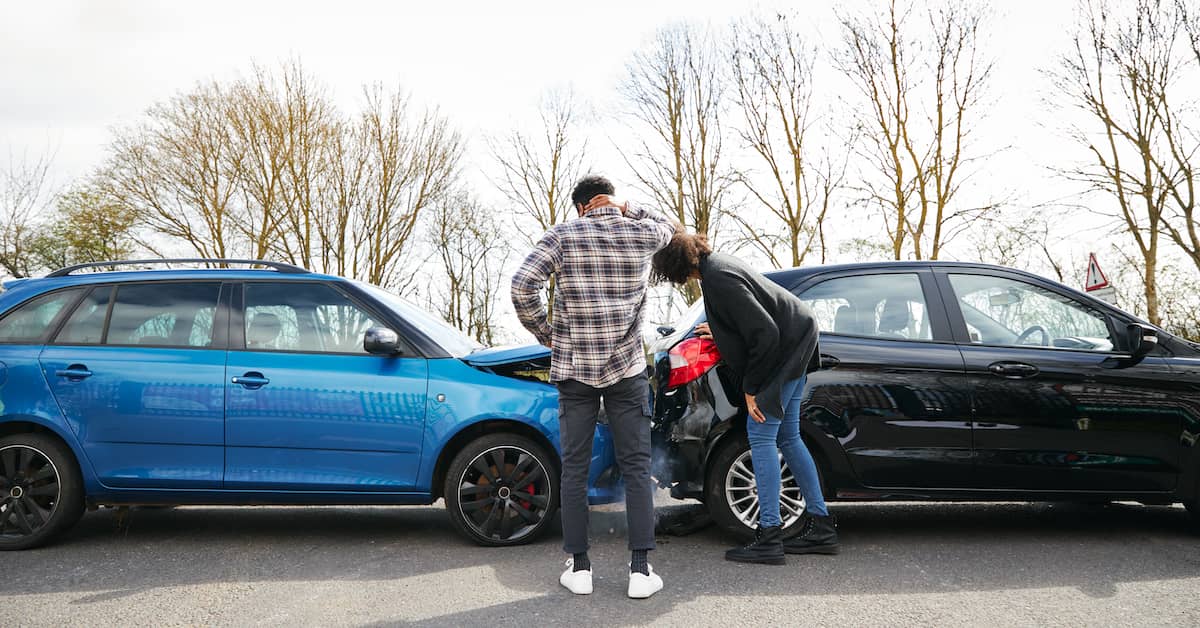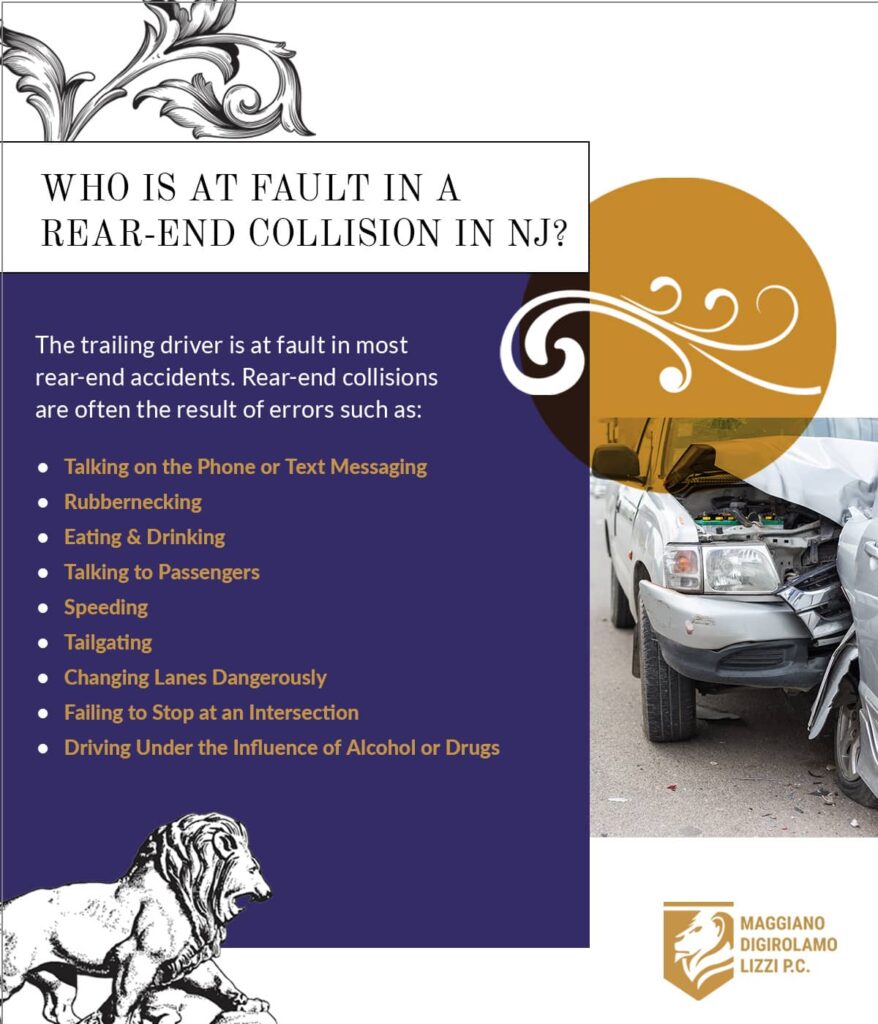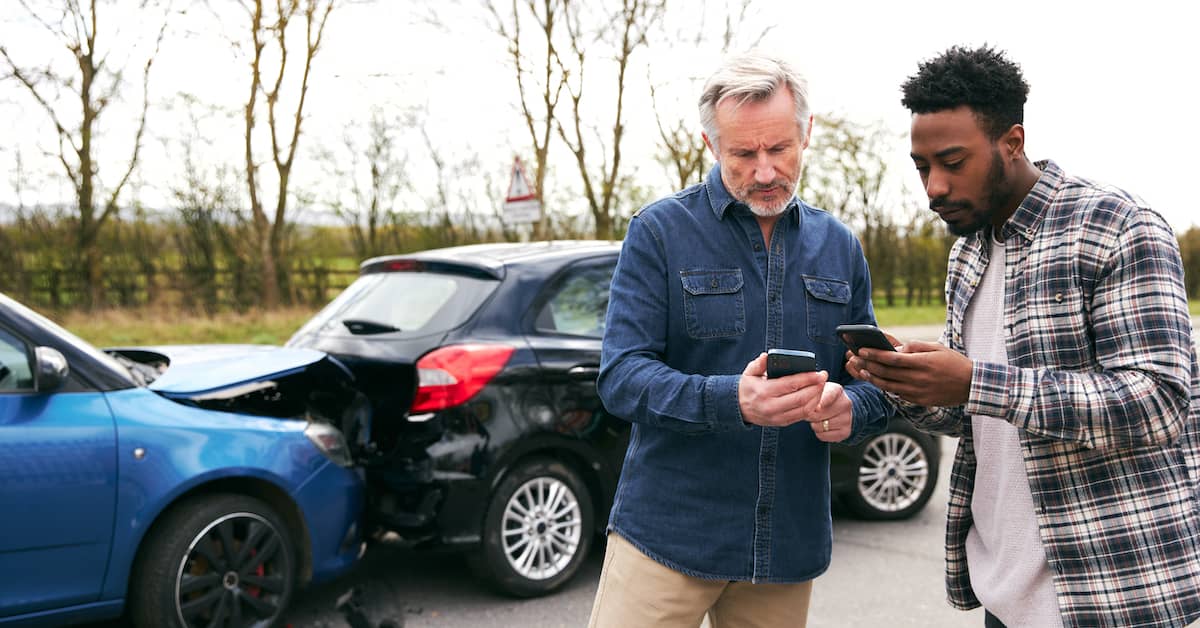
Rear Ended: Whose Fault?
You have rights if you got rear-ended by another driver. However, just because a motorist hits you from behind does not mean that you are automatically entitled to compensation.
Rear-end collisions are extremely common. The 2021 National Highway Traffic Safety Administration (NHTSA) Traffic Safety Facts revealed that 29% of all car accidents involved one driver rear-ending another. These were by far the most frequent type of motor vehicle accident, accounting for 7.5% of fatal accidents, 27.5% of injury accidents, and 29.8% of property-damage-only accidents.
If you have been seriously injured in a rear-ended car crash, what really matters is who was at fault in your case. Call Maggiano, DiGirolamo & Lizzi at (201) 585-9111 today if you got rear-ended in or around Fort Lee, New Jersey.
The Trailing Driver Is At Fault in Most Rear-End Accidents
In the vast majority of circumstances, the following driver will be at fault in a rear-end car accident. There are very few excuses for crashing into the back of another vehicle.
In most cases, rear-end car crashes are the result of errors such as:
- Talking on the phone or text messaging behind the wheel
- Rubbernecking and looking at other objects outside of the vehicle
- Drivers taking their hands off of the wheel to eat or drink
- Turning around to talk to backseat passengers
- Speeding (either exceeding the posted speed limit or driving too fast for the current road and weather conditions)
- Tailgating or waiting too long to brake
- Changing lanes dangerously (i.e., in heavy traffic and without enough room to merge safely)
- Failing to stop at an intersection or assuming the driver in front will try to “beat” a yellow light
- Driving under the influence of alcohol or drugs
If the driver who rear-ended you was distracted, tailgating, or otherwise negligent behind the wheel, the trailing driver may be held liable for your damages from the accident. (Unless you are limited to seeking no-fault coverage under New Jersey law.)
You should speak to a car accident lawyer in New Jersey as soon as possible if you got rear-ended at a red light, a stop sign, or in any other situation. A knowledgeable attorney can advise you of your options for pursuing compensation.
Exceptions When the Lead Driver May Be At Fault for Getting Rear-Ended
While the trailing driver will be at fault in most cases, there are some circumstances in which the driver who gets rear-ended may be found liable for a collision. Most of these circumstances are fairly extreme.
For example, if the driver in front slams on the brakes suddenly and for no apparent reason, the lead driver will likely be liable if the driver in back can’t avoid a rear-end collision. (Although it could still be argued that the trailing driver could have taken steps to avoid the crash.)
Other potential examples where the lead driver may be at fault for a rear-ended car accident include:
- A driver backs out of a parking space without looking for other vehicles
- A driver changes lanes without signaling
- A driver fails to repair the vehicle’s brake lights if they aren’t working
If you were the trailing driver in any of these situations, it is important to consult an attorney as soon as possible. Even if the rear-end collision was partly your fault, you may still be entitled to compensation for your injuries and damages.

Other Possible Scenarios in Rear-End Accidents
In addition to driver error, several other factors can lead to rear-end car crashes. Maybe the driver’s brakes failed or the road surface was too slippery for the trailing driver to maintain control under harsh braking.
If you got rear-ended and suffered serious injuries in the accident, your lawyer may be able to pursue a claim against one or more third parties as well.
What Happens If You Get Rear-Ended and Hit the Car in Front of You?
If you got rear-ended at an intersection or in heavy traffic, the collision may have pushed your vehicle into the car in front of you. In this scenario, you would only be deemed at fault for this secondary collision if you reasonably could have avoided it.
For example, if you were riding the bumper of the car in front of you, this is a scenario in which you could potentially be held at least partially responsible. But here, too, it is important not to make any assumptions. Determining exactly what happened—and why—will require a thorough investigation.
What to Do When Someone Hits You From Behind
Regardless of whether the trailing driver or a third party was at fault for the rear-end accident, you will need proof in order to recover the financial compensation you deserve. Gathering evidence will help you build your case. Here are some steps that you can take immediately after a rear-end crash to protect your rights:
- Safety First: Move to a safe location and, if you can, check for injuries. Call 911 if necessary, and get medical assistance if you need it. Your health is the most important factor in any accident. Once you are safe and able, you can proceed with the next steps.
- Report the Accident to Police: Always contact law enforcement to file a report. Even if the damage seems minor, you need this report for your insurance claim.
- Document the Scene: If you are able to do so, take pictures/videos of the accident scene, damage to the vehicles, visible injuries, skid marks, road conditions, etc. But remember, though this visual evidence can help support your claim, do not put yourself in danger to retrieve it.
- Exchange Information with Other Drivers & Witnesses: Get the name, contact info, driver’s license number, insurance details, license plate numbers, and VIN of the other driver(s) involved. Ask for contact information and statements from any witnesses or passengers.
- Get Medical Attention: Yes, we said it again because it bears repeating. After a rear-ended car accident, you need to seek medical assistance. Even if you don’t feel injured, you should schedule an appointment with your general practitioner as soon as possible to check for latent symptoms. If you do not see a doctor, it will be very hard—if not impossible—to prove your injuries.
- Consult a Rear-End Collision Lawyer: Rear-end accidents can be more complicated than they seem. It is important to discuss your case with an attorney as soon as possible. Schedule a FREE consultation with a lawyer who can help you explore every option for compensation.
There are various ways to prove fault in a rear-end accident, from obtaining camera footage and witness statements to conducting a forensic investigation at the scene of the crash. However, collecting proof of fault (and using this proof to your advantage) requires experienced legal representation.
Frequently Asked Questions After a Rear-End Car Accident
What Should You Do If You're About To Be Rear-Ended?
The best strategy when dealing with a rear-end car crash is not to be in one in the first place! We know, they are so common, it is easier said than done. Still, if discussing ways to avoid or reduce the effects of a rear-end accident could help one person, then we have to try.
To help minimize injuries and damage in a rear-ended crash, try taking the following actions:
Leave Adequate Space In Front of You
When stopping at stop signs or traffic lights, be sure to leave enough space between you and the car in front of you. This allows you the opportunity to maneuver around it should you need to. It can also help to prevent you from rear-ending that car in a chain reaction should you be hit.
Hold the Steering Wheel Properly
Firmly grip the steering wheel with your arms slightly bent. If you are hit from behind and pushed forward, you may maintain better control of the vehicle.
Support Your Head & Body
If you suspect an impact is coming, keep your head firmly against the headrest to reduce the risk of whiplash. This may not prevent injury, but it may support your neck and prevent the back-and-forth motion typical in rear-end car crashes.
Wear Your Seat Belt
Though you’d think this is a given, we’ve got to repeat it. Wearing your seat belt significantly reduces your risk of injury in any accident. It is your first line of defense and should never be overlooked.
Alert the Approaching Driver
If you notice a vehicle in the rearview mirror that is approaching at a higher speed than is safe, gently tap your brakes or turn on your hazard lights. This could alert the driver and give them time to slow down or move to avoid your vehicle.
Taking these precautions might help you avoid an accident or minimize injuries. However, should you still be involved in a rear-end accident, get medical assistance and consult an attorney about your rights.
What Hurts After Being in a Rear-End Car Crash?
There are some common areas of pain for drivers and passengers in rear-end crashes, including:
- Neck
- Upper back
- Head
- Lower back
- Shoulders
If you feel pain after a rear-end crash, see a medical professional as soon as possible. They can assess your ailments and create a treatment plan to minimize further exacerbation of your injury. Make sure to hold on to all medical documentation to support your claim.
How Long Does It Take To Feel the Effects of a Rear-End Car Accident?
If you got rear-ended, your injuries might not be apparent right away. It could take several hours to a few days to feel the full effects of your injuries.
Sometimes adrenaline masks the symptoms of an injury, and some injuries just aren’t noticeable at first. Common rear-end crash injuries that may not be immediately apparent include:
- Whiplash
- Soft tissue damage
- Concussions
Remember that symptoms often worsen if left untreated. Seek the assistance of a medical professional as soon as possible after any motor vehicle accident.
Can a Minor Rear-Ended Car Accident Cause Whiplash?
So, you got rear-ended, but the damages seemed minor. Could that still cause whiplash? Yes, even a minor rear-end car accident can cause whiplash.
Whiplash can occur when the neck is suddenly and forcefully jerked back and forth. This can even happen at low speeds. Whiplash symptoms can include:
- Neck pain
- Stiffness
- Headaches
- Dizziness
- Fatigue
These symptoms may take hours to days to surface. Be sure to pay attention to how you are feeling after an accident and continue to monitor your pain and discomfort in the days afterward.
If you have severe symptoms, seek medical care immediately. Even if you seem okay, be sure to schedule an appointment with your primary care doctor. You do not want an injury to be overlooked and left to worsen.
Got Rear-Ended? Speak to an Attorney Today
Fault can be a complicated issue in a rear-end collision. Although many people assume the driver in back is automatically at fault, there are a host of factors to consider when determining liability for the crash.
Maggiano, DiGirolamo & Lizzi has the experience, knowledge, and resources to identify the at-fault party or parties in your case and hold them accountable for your losses. We have achieved significant compensation on behalf of clients who were injured in rear-end collisions with cars, trucks, and other vehicles.
If you got rear-ended in Fort Lee or another area of New Jersey, contact Maggiano, DiGirolamo & Lizzi today for a FREE case review.


















